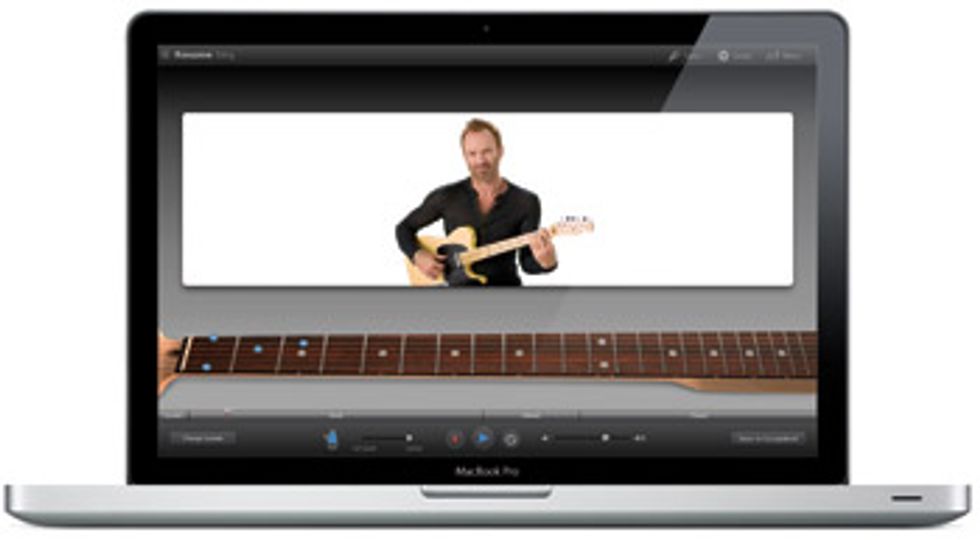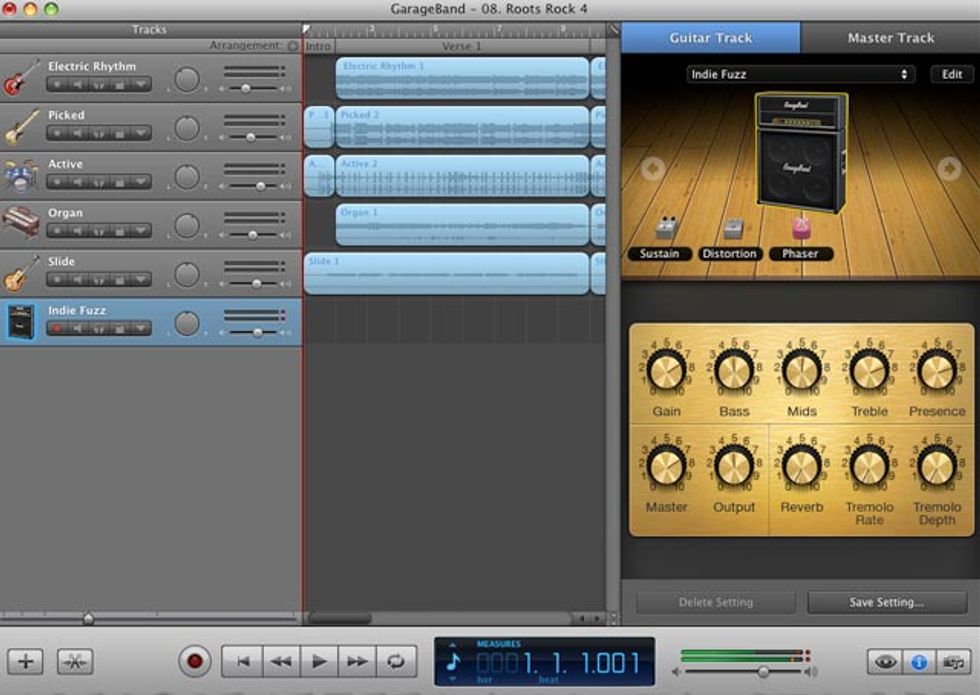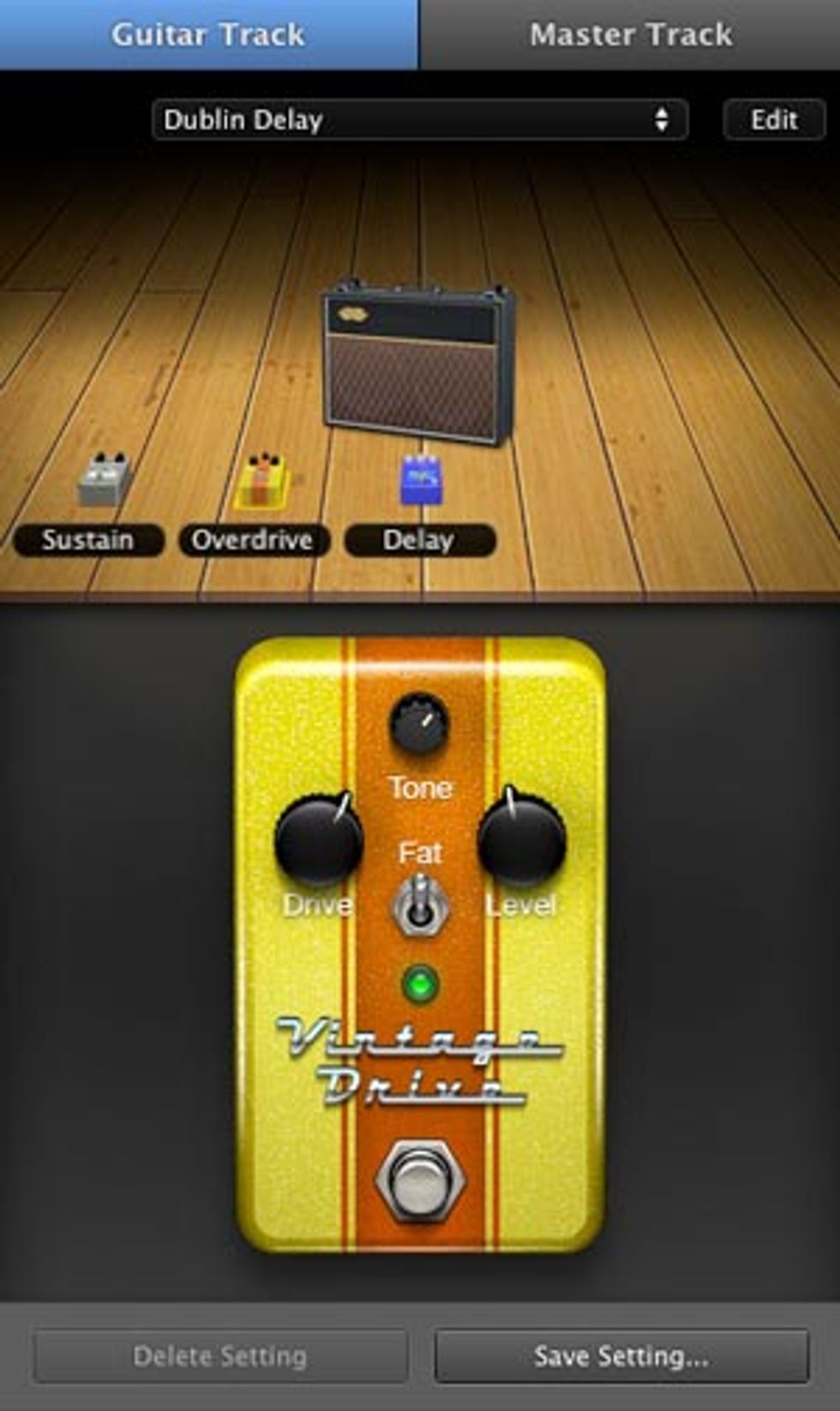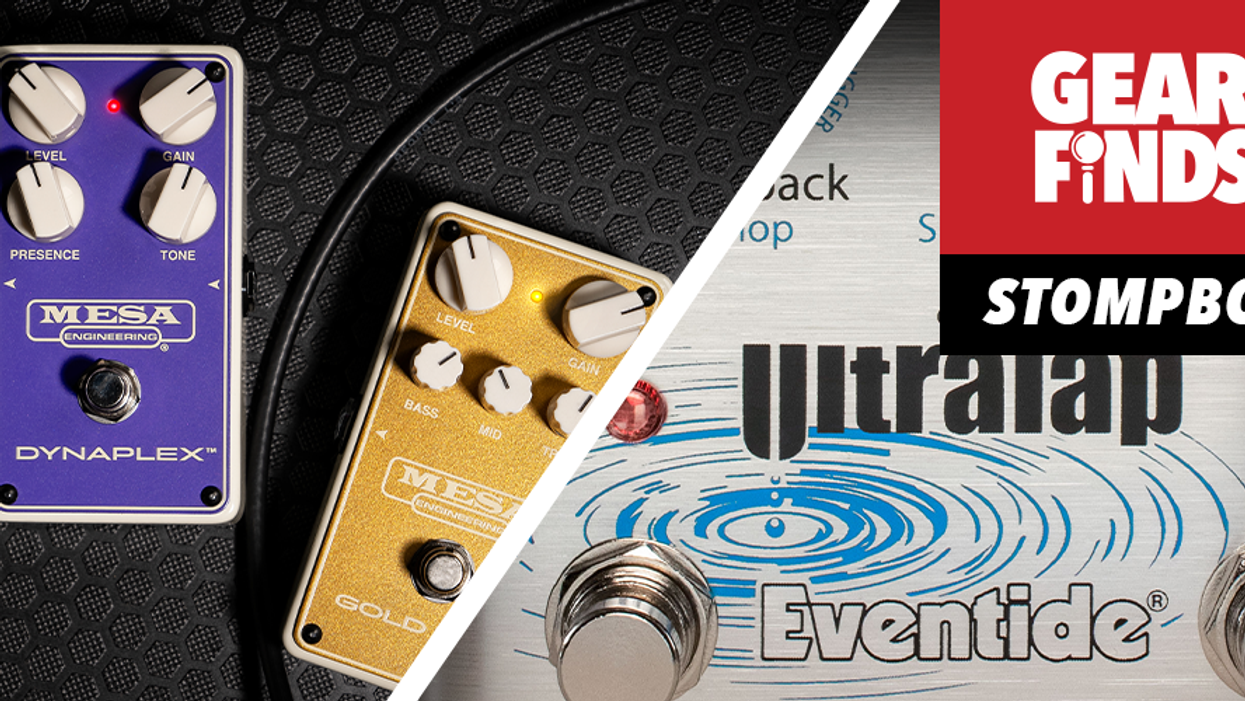| Click here to jump to this review's sound samples. |
The program has continued to evolve with the hardware, with Apple quietly adding features and tricks as processing power and RAM allotments continued their upward slope. The latest release, dubbed GarageBand ’09 and existing within the equally souped-up iLife ’09 suite, could be considered both a minimal step and a big leap, depending on your vantage point in the music world. Guitarists and learning musicians will likely be pleased; other users less so.
In the Garage
For the most part, GarageBand ‘09 remains the same creature it was in 2008, with a few tucks and lifts to keep things looking modern; if you’ve used previous versions, you’ll feel right at home here. Users hoping for a trickle-down taste of some of Logic Pro’s studio-quality features will probably be a little disappointed after upgrading, but it really shouldn’t come as a surprise: Apple, being the good business people they are, weren’t likely to begin cannibalizing their flagship framework to soup up a cheap bundled program (included with new Macs, or $79 to upgrade the entire iLife suite).
 Sting teaching a guitar lesson in GarageBand photo courtesy of Apple |
That said, the program’s most impressive upgrade is the inclusion of brand new amp models and an overhauled interface for working with electric guitars. While previous versions of GarageBand featured an Amp Simulation effect, it always seemed to be more “simulation” than “amp”; likewise, the interface for tweaking tones left much to be desired. GarageBand ’09 has streamlined the process for recording a guitar, and has managed to make it a bit of fun as well.
The interface is surely the biggest improvement here; Apple has wisely followed the lead of other amp modeling products on the market and provided users with actual knobs, rendered on a mock front/top panel that resembles one of the program’s five new amp models (a tweed combo, a blackface combo, a Vox combo, a Marshall half-stack and a Mesa Boogie-type lead head). Players can also choose from ten different stompboxes, which are laid out on the floor in front of a player’s “amp,” adding another level of tactile engagement to the proceedings.

Likewise, the process of getting the guitar signal into the computer has been much improved; upon telling GarageBand to add a new track, it asks if the instrument is an electric guitar. Confirming this pulls up the amp interface and allows you to begin tweaking your signal immediately. If you don’t already have an audio interface to feed your guitar signal into your computer, it is highly recommended – I used an IK Multimedia StealthPlug to run my guitar signal directly into the USB port, and was literally laying down tracks within minutes of installing the GarageBand. Guitarists needing an intuitive, fast audio scratchpad will definitely appreciate the streamlined approach.
| Download Example 1 Recorded over GarageBand’s “Roots Rock” theme. The rhythm guitar is a Vox combo with a compressor/sustainer; the lead guitar is a blackface combo with a compressor/sustainer and an overdrive set at medium gain with the “Fat” setting engaged. | |
| Download Example 2 Recorded over GarageBand’s “Slow Blues” theme. The lead guitar is a Marshall half-stack set at medium gain, played on the bridge pickup. | |
| All clips recorded with a Les Paul Studio, through an IK Multimedia StealthPlug into GarageBand ’09. | |
As with any software-based amp modeler, as the gain increases, things can get a little crazy, and so it is with GarageBand ’09. Fortunately, the only weak spot in the amp lineup lies within the Mesa Boogie-type lead head, which had a tendancy to collapse into itself when the Gain knob was turned past 3 o’ clock. Likewise, some of the nuance found in other amp modelers is lost here – the amps aren’t supremely touch sensitive or deep (although there is a surprising amount of dynamic range present), and purists will likely notice that all of the amps’ controls are the same, consisting of Gain, Bass, Mids, Treble, Presence, Master, Output, Reverb, Tremolo Rate and Depth, regardless of any historical accuracy – but that’s really nitpicking. These models sound good enough that it should be no surprise when they start popping up on albums.
 Apple has also introduced a range of stompboxes that help expand the tonal possibilities of GarageBand. Consisting of a phaser, overdrive, distortion, fuzz, chorus, phaser, vibe, auto wah/filter, echo and compressor, GarageBand ‘09’s pedal collection hits all of the bases without being flashy. As you might expect, the results vary, depending on how you’re using the effects and what you’re expecting: the Vintage Drive OD was a pleasant surprise, adding some organic thickness and grit to GarageBand’s amps, while the Fuzz Machine and the Grinder distortion were a little less inspiring. The Squash Compressor, featuring two attack modes (Fast and Slow), was truly the unsung hero of the group, helping to bring out the best in GarageBand’s Vox and Fender models.
Apple has also introduced a range of stompboxes that help expand the tonal possibilities of GarageBand. Consisting of a phaser, overdrive, distortion, fuzz, chorus, phaser, vibe, auto wah/filter, echo and compressor, GarageBand ‘09’s pedal collection hits all of the bases without being flashy. As you might expect, the results vary, depending on how you’re using the effects and what you’re expecting: the Vintage Drive OD was a pleasant surprise, adding some organic thickness and grit to GarageBand’s amps, while the Fuzz Machine and the Grinder distortion were a little less inspiring. The Squash Compressor, featuring two attack modes (Fast and Slow), was truly the unsung hero of the group, helping to bring out the best in GarageBand’s Vox and Fender models. The modulation effects also sounded passable, if not a little flat at times, with the Blue Echo and the Phase Tripper taking top honors. If you’re not in the mood to shuffle boxes around, users can choose from a large collection of presets, many of which are quite good – the Dublin Delay, for instance, is a dead-on recreation of the Edge, and one of the best presets in the bunch. Unfortunately, Apple’s decision to not allow MIDI control of these effects limits their usage in real-time situations – the only way to trigger an effect on and off is with a mouse click. Even so, enterprising guitarists should be able to find some great textures in a minimum of time.
The Final Mojo
Apple continues to push GarageBand’s capabilities with each release, and the ’09 version is no exception. With the addition of some newly envisioned amp models and effects, the program continues to offer incredible value to guitarists looking to capture their thoughts quickly and seamlessly. If you’ve always wanted to dabble in amp modeling without making a big investment of money or time, you’ll dig this update.
Buy if...
you love GarageBand’s intuitive style and you want to add some solid amp sounds on the cheap
Skip if...
you’re looking for more nuance from your amp/effect models
Rating...
MSRP $79 (upgrade for entire iLife '09) - Apple - apple.com |






![Rig Rundown: Russian Circles’ Mike Sullivan [2025]](https://www.premierguitar.com/media-library/youtube.jpg?id=62303631&width=1245&height=700&quality=70&coordinates=0%2C0%2C0%2C0)

















